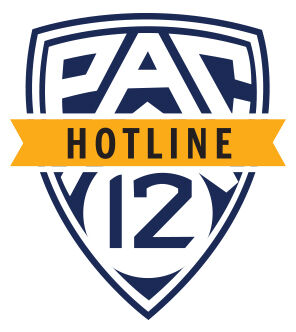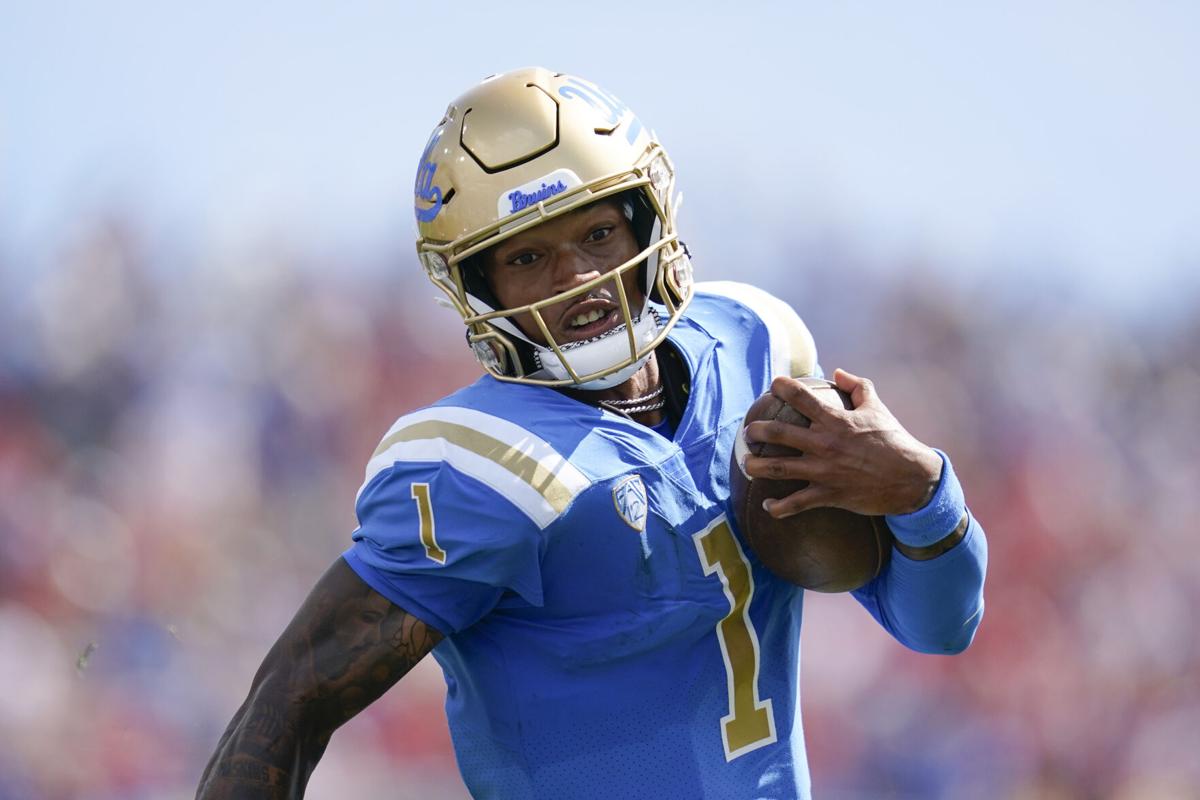Instant reaction to Pac-12 developments on the field from Saturday …
1. All about LA, for now
The Los Angeles schools are the talk of the conference in the middle of October, just as they were at the end of June — only for vastly different reasons.
Three-and-a-half months ago, USC and UCLA made headlines for Ivory-Tower decisions (to join the Big Ten). Now, their on-field play is generating the attention.
The crosstown rivals (and previously underachieving programs) are 6-0 in the same season for the first time since 2005 after fending off challenges Saturday from one-loss opponents.
The Trojans handled Washington State 30-14, while the Bruins outlasted Utah 42-32.
The former will be in the Top 10 of the AP poll when it’s released Sunday morning; the latter should be in the Top 15, at worst.

At this point, both must be considered College Football Playoff contenders — yes, even UCLA (more on that momentarily).
The Hotline is struck by their similarities. The Trojans and Bruins aren’t identical in roster makeup or schemes, but they’re clearly fraternal twins.
Both head coaches, USC’s Lincoln Riley and UCLA’s Chip Kelly, are among the college game’s most creative offensive minds of the past 10-12 years, and both have made expert use of the transfer portal.
Both defenses are more opportunistic than they are stout.
And both offenses claim three superb playmakers: USC’s combination of quarterback Caleb Williams, tailback Travis Dye and receiver Jordan Addison; and UCLA’s equivalents in quarterback Dorian Thompson-Robinson, tailback Zach Charbonnet and receiver Jake Bobo.
(If we had to choose, the Hotline would opt for UCLA’s triumvirate.)
Also, both teams will face their most challenging assignments of the season when they return to the field.
USC visits Utah next weekend, while the Bruins have a bye, then head to Oregon.
By late October, the Pac-12’s hierarchy might look quite different.
But for now — and for the first season in eons — the center of gravity is in Los Angeles.
2. UCLA and the CFP: A history
It’s important to note that neither USC nor UCLA faces a must-win situation in its next game, at least in the context of a CFP berth.
Any one-loss Power Five champion stands an excellent chance of participating in the semifinals. If the Trojans lose in Salt Lake City or the Bruins lose in Eugene, only their margin for error will have vanished.
Finish with a 12-1 record and Pac-12 title in hand, and a CFP berth will be within reach.
And yes, that goes for the Bruins.
The Hotline examined the résumés of all 32 teams that have participated in the CFP and found two instances in which a semifinalist did not own a nonconference victory over a Power Five opponent:
Both times, it was Ohio State.
The Buckeyes reached the CFP in 2014 with wins over Navy and Kent State and a loss to Virginia Tech.
And they made it in 2019 with wins over Florida Atlantic, Miami-Ohio and Cincinnati, which itself was an 11-game winner that year.
Each of the other 30 playoff teams claimed at least one out-of-conference victory over a Power Five foe.
UCLA’s non-conference lineup this season consists of Bowling Green, South Alabama and Alabama State.
Not only do the Bruins need to keep winning, but they must do so impressively. With that schedule, their resume would get picked apart by the talking heads on ESPN.
3. Rapid reaction
Our thoughts on the seven Pac-12 teams with records of 4-2 or better:
- UCLA’s offense is the best in the conference — yes, better than USC’s attack — because of the immaculate run-pass balance and the way Kelly’s pieces fit together. But the defense can be sliced and diced.
- Utah’s defense isn’t nearly as dominant as it was last year — we lost track of the missed tackles in the Rose Bowl on Saturday — and the offense desperately needs a downfield component to stretch opponents and create running lanes.
- Oregon might have the best all-around team, especially when quarterback Bo Nix is comfortable and free of turnovers. Don’t be deceived by the score of the Georgia game; the Ducks have an excellent chance to win the Pac-12 title. (How would the national media respond to the Pac-12 producing a champion that owns a 49-3 loss to Georgia? Take one guess.)
- USC’s offense is a half-step behind UCLA’s attack — it was hardly an indomitable force against Washington State or Oregon State — but the defense possesses a higher ceiling, along with the most disruptive force in the conference in lineman Tuli Tuipulotu.
- Washington State’s defense is arguably the best in the Pac-12, but the unit needs help from the offense to avoid wearing down over the course of the season. It’s tough to play under back-to-the-wall pressure week after week.
- Oregon State gets more out of its personnel than any team but must solve the quarterback situation in order to remain in contention deep into November.
- Washington’s defense isn’t just bad, it’s inverted: The secondary, long the strength of the program, is now the weak link. The Huskies were shredded by ASU backup quarterback and Marana High grad Trenton Bourguet and are 0-2 on the road after the hot home start.
- Also, Michigan State is terrible.
4. The nightcap comeback
The best finish of the day unfolded just before midnight in classic #Pac12AfterDark fashion.
Oregon State trailed Stanford 24-10 entering the fourth quarter with a backup quarterback (Ben Gulbranson) and no kicking game (because of an injury to the long-snapper).
So what happened?
- The Beavers scored 10 seconds into the quarter to pull within 24-16 but missed the two-point conversion.
- They scored again with 5:45 remaining but also failed on the conversion and trailed 24-22.
- They allowed a Stanford field goal with 58 seconds left and were down 27-22.
- They scored the game-winner with 13 seconds left on a catch-and-run from Gulbranson to receiver Tre’Shaun Harrison.
The throw was down the right sideline. Harrison turned, jumped and plucked it away from the Stanford defender, then raced down the sideline for a miracle 56-yard touchdown.
It was the most surprising finish, perhaps, since the ‘Hill Mary’ in Arizona’s 49-45 victory over Cal in 2014.
The 28-27 victory moves the Beavers (4-2) into prime position for another bowl berth: They need two wins in their final six games — and one of them is Colorado.
It was a crushing loss for Stanford, which merely had to avoid a defensive breakdown in order to end its 10-game losing streak against FBS opponents.
Instead, the Cardinal heads to Notre Dame next weekend in search of its first major college win in 54 weeks.
5. On targeting
There were a slew of targeting calls across the conference Saturday; all of them managed to outrage one fan base or another.
The USC-Washington State game featured an ejection for each team — and we thought the officials got it right in both instances.
First, let’s remember that on-field officials are instructed to call anything that seems close to targeting, at which point the replay booth determines if the call should be upheld or overturned.
There are two ways targeting can be upheld:
- If the player leads with the crown of his helmet, regardless of where the contact is made with the opponent.
- If a player makes forcible contact to the head or neck area with his helmet, forearm, hand, fist, elbow or shoulder.
In both cases, the so-called indicators must be present. Primarily, those involve the offending player launching into a defenseless opponent.
But the key phrase requires just seven words: “When in question, it is a foul.”






